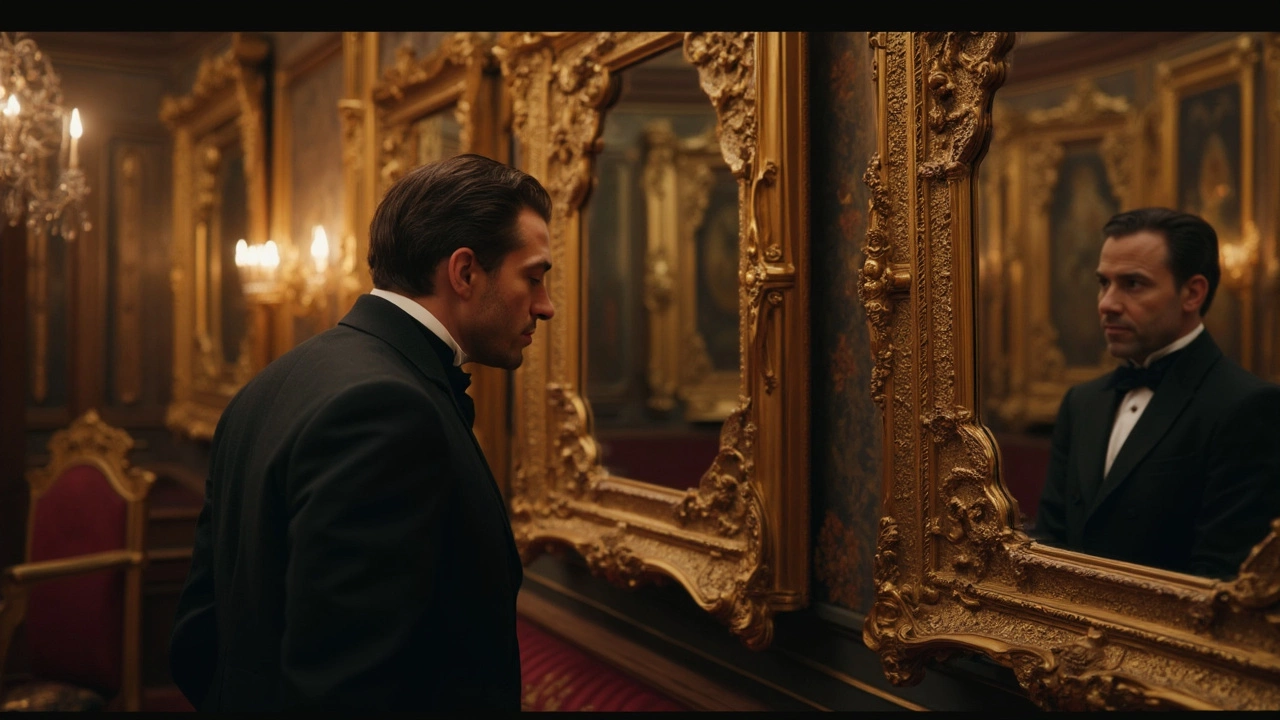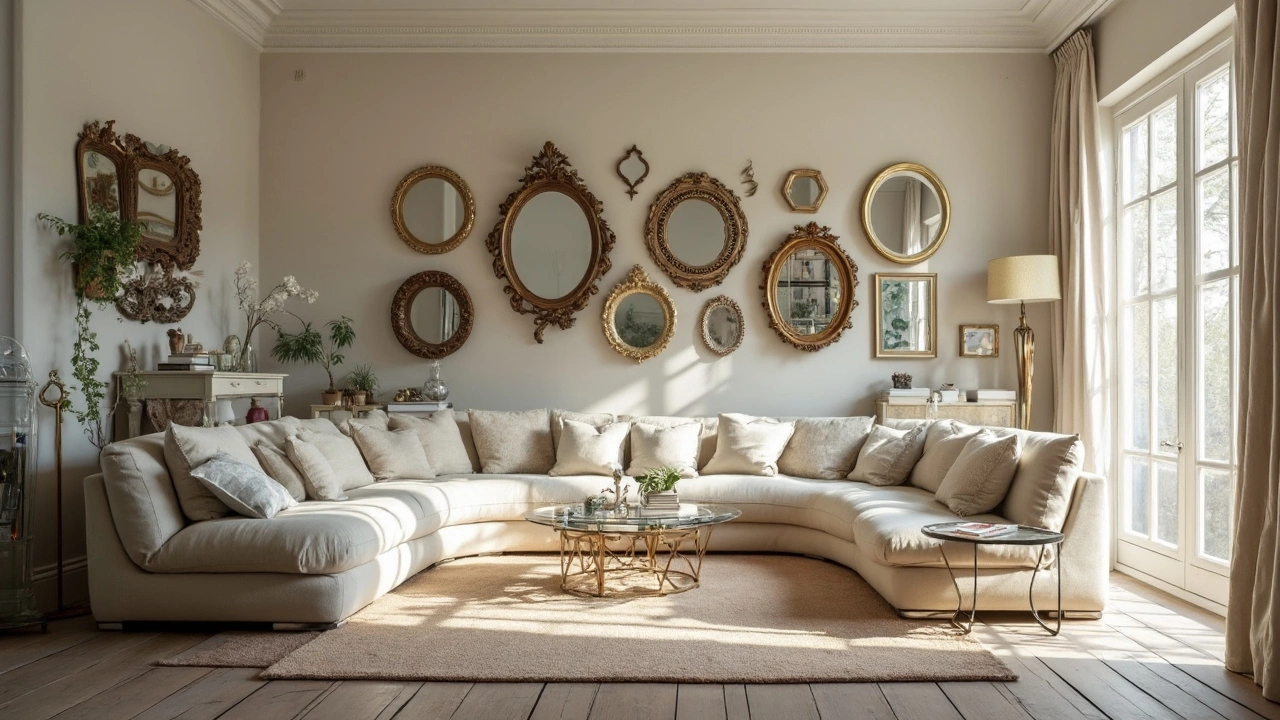Who is Obsessed with Mirrors? Unraveling the Fascination
 Apr, 8 2025
Apr, 8 2025
Who'd have thought an everyday object like a mirror could be so captivating? These shiny rectangles aren't just for checking if you've got spinach stuck in your teeth; they're steeped in history, psychology, and more than a bit of self-obsession. Think about it: mirrors have been around since ancient times, but back then, they were prized possessions, not just slapped on every wall like today.
These days, we've turned them into more than just reflective surfaces. Mirrors have become tools for self-exploration and, let's face it, sometimes a bit of narcissism. Ever wondered why your teenage kids spend hours practicing their best Instagram face in front of a mirror? It's all about identity and self-perception. But hey, it's not just the young ones; we've all caught ourselves giving a quick hair check in a shop window reflection.
But before we dive deep into why we're so obsessed with mirrors, let's take a quick look at how they came to be so embedded in our lives. Historically, mirrors were made from polished metals or stones—imagine lugging one of those around. Today, they're mostly made of glass, making them accessible and essential in our daily routines.
- The Historical Allure of Mirrors
- Psychology Behind Mirror Obsession
- Culture and Mirrors: A Worldwide Perspective
- Practical Tips for Healthy Mirror Usage
The Historical Allure of Mirrors
Mirrors have been fascinating humans for hundreds of years, long before the invention of smartphones and selfies. It all started around 6000 BC with polished obsidian stones used by the folks in Anatolia, now modern-day Turkey. Imagine trying to get a good look at yourself in a piece of shiny volcanic glass!
Fast forward a bit, and the ancient Egyptians were crafting small mirrors from polished copper. Meanwhile, the Chinese were using metal alloys in 2000 BC. These early mirrors required a good polish to reflect anything at all, making them a luxury item mostly for the wealthy. The Roman author Pliny the Elder once noted their use in grooming, saying,
"Polished metal mirrors were a woman's delight,"emphasizing the connection between mirrors and self-admiration.
The real game-changer came during the Renaissance in the 15th century. Glass mirrors started being mass-produced in Venice, thanks to advances in technology. The Venetians, quite the clever bunch, were the first to make mercury-lined glass mirrors that gave a clearer picture. These innovations quickly made mirrors popular across Europe, not just as functional items but as symbols of status and wealth.
To give you an idea of how things changed over time, here's a quick look at how mirrors evolved in different parts of the world:
- Ancient Egypt: Used polished copper around 2900 BC.
- Rome: Embraced silver mirrors, expensive and beautifully crafted.
- China: Created "magic" mirrors which appeared normal but projected images on surfaces when light passed through them.
- Venetian Renaissance: Developed mirrored glass with mercury, greatly enhancing clarity.
In the modern world, mirrors are everywhere, from bathroom vanities to massive architectural features. They've come a long way from the exclusive luxury they once were. This historical journey shows just how much we cherish seeing our reflections. Whether for practical purposes or vanity, we've always been a bit obsessed with mirrors!
Psychology Behind Mirror Obsession
So, what's going on in our heads when we can't stop checking ourselves out in mirrors? It boils down to a mix of psychology, self-awareness, and yeah, a bit of vanity. Our fascination with mirrors often starts when we're toddlers realizing that reflection staring back is, indeed, us. It's a self-awareness milestone psychologists call the 'mirror stage.'
As we grow, mirrors become key players in how we see ourselves. They feed our self-image and can even boost our mood. There's this thing called 'the contagion effect,' where seeing ourselves smiling in a mirror can actually make us feel happier. Who knew something as simple as a smile could be so infectious?
On the flip side, this obsession isn't always a walk in the park. Ever heard of 'body dysmorphic disorder'? It's when people can't stop focusing on perceived flaws, often spending hours nitpicking in front of a mirror. It affects about 2% of the population, making it not that rare. The digital age hasn’t helped either, with selfies adding a new layer to our mirror games.
But mirrors aren't just about looks. They also help us practice social cues—prepping for an interview or rehearsing a tough conversation. It's like having your own private audience, ready 24/7 with zero judgments.
But here’s the kicker—moderation is key. While mirror gazing can boost self-esteem, too much can spiral into obsession. The trick is using mirrors to build confidence, not insecurity. Next time you glance at your reflection, take a moment to appreciate it, but remember, what matters most is beyond the glass.

Culture and Mirrors: A Worldwide Perspective
Mirrors have a kind of universal charm, don't they? They're found in just about every culture around the globe, and their significance varies widely. In some places, they're purely practical, while in others, they've got this whole mystical and symbolic thing going on.
Take Japan, for instance. Mirrors are considered sacred objects in Shinto, the indigenous spirituality of the country. They're seen as a tool to reflect the soul and are often used in rituals. And then there's the famous Yata no Kagami, a legendary mirror that's part of the Imperial Regalia of Japan, symbolizing honesty and wisdom.
Hop over to China, and mirrors take on another layer of meaning. Feng Shui practices view them as energy reflectors, bouncing Chi (energy) around a space. They're also believed to drive away evil spirits—handy, right?
Meanwhile, in Western cultures, mirrors have long held a place in folklore. Legends of vampires having no reflection, or the myth that breaking a mirror brings seven years of bad luck, are familiar tales. These superstitions highlight how deeply mirrors are woven into daily life, even if today they're often just background decor.
Mirrors also play a huge role in art and literature worldwide. Remember Lewis Carroll’s "Through the Looking-Glass"? It uses the mirrors as a metaphor for exploring alternate realities—a theme that really tickles the imagination of readers everywhere.
What's fascinating is that, despite cultural differences, the basic function of a mirror remains consistent: it's a surface to reflect our image. But how different cultures perceive that reflection makes for a pretty intriguing study, don't you think?
Practical Tips for Healthy Mirror Usage
Let's face it, mirrors are everywhere, and it sometimes feels like they're watching us more than we're watching them. But how do you make sure this mirror obsession doesn't take over your life? Here are some practical tips to keep your mirror usage healthy and balanced.
If you find yourself standing in front of a mirror for too long, set a time limit. Maybe just a quick two-minute look before leaving the house. Use a timer if you have to. This helps you focus on what really matters and not get too caught up in minor imperfections.
"It's important to remember that mirrors should reflect your external appearance, not dictate your internal self-worth," says Dr. Emma Reed from the Psychology and Wellbeing Center.
Another nugget of wisdom is to create a no-mirror zone in your home. It might sound a bit extreme, but having a space where mirrors just don't exist can give you a bit of a mental breather.
- Start the day with a mantra: Look in the mirror and focus on one positive thing about yourself.
- Be mindful of your psychology: If you're using mirrors to harshly critique yourself, it might be time to reconsider what you're seeing versus what's really there.
- Get involved in cultural activities that don't involve mirrors, like joining a local club that engages in hobbies where your appearance doesn't matter.
For those who love data, a study by the University of Auckland found reducing mirror time improved overall well-being and self-image for 75% of participants.
Remember, the key is using mirrors to enhance rather than hinder your life. It's all about balance and making them work for you, not against you.